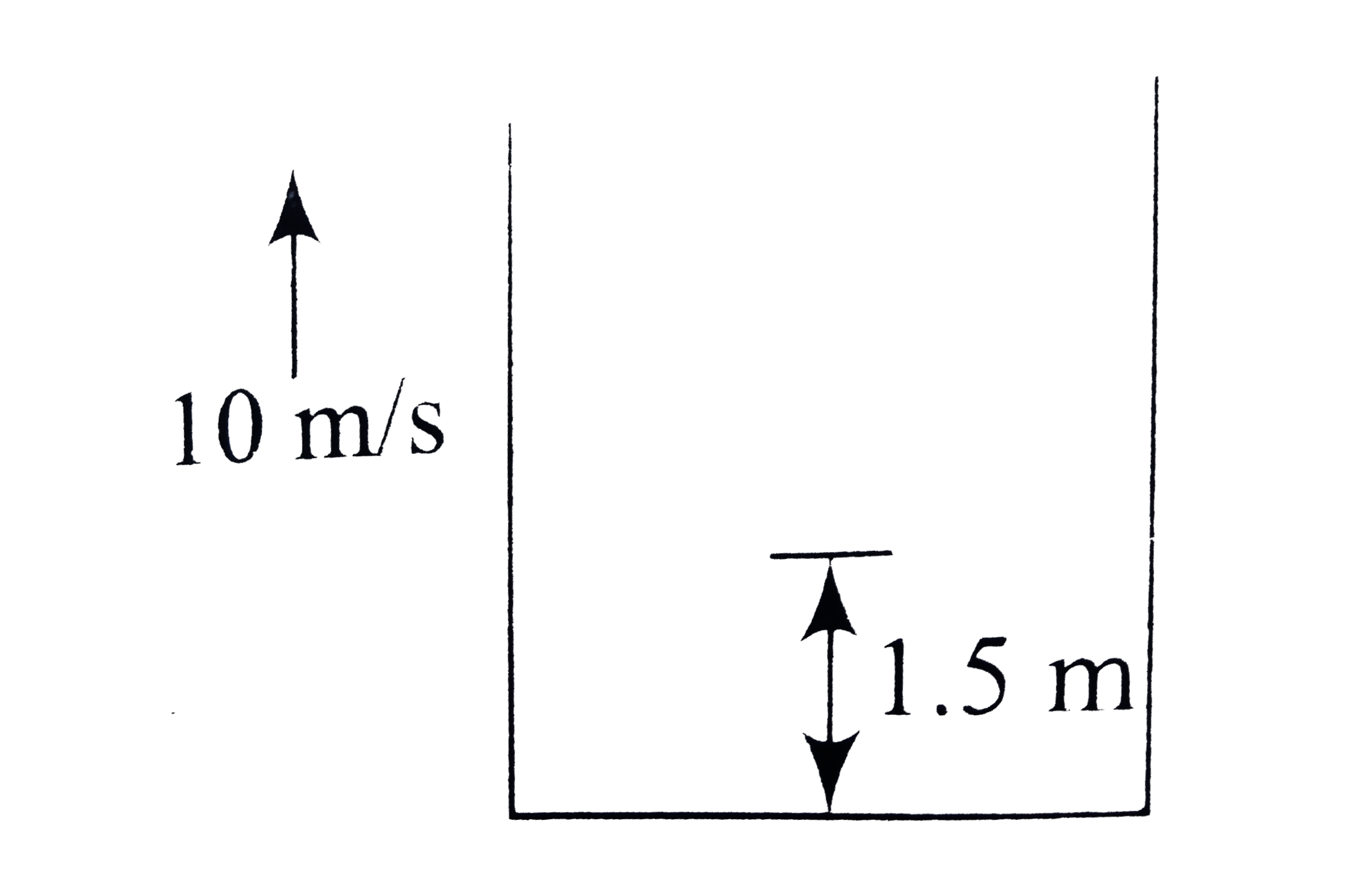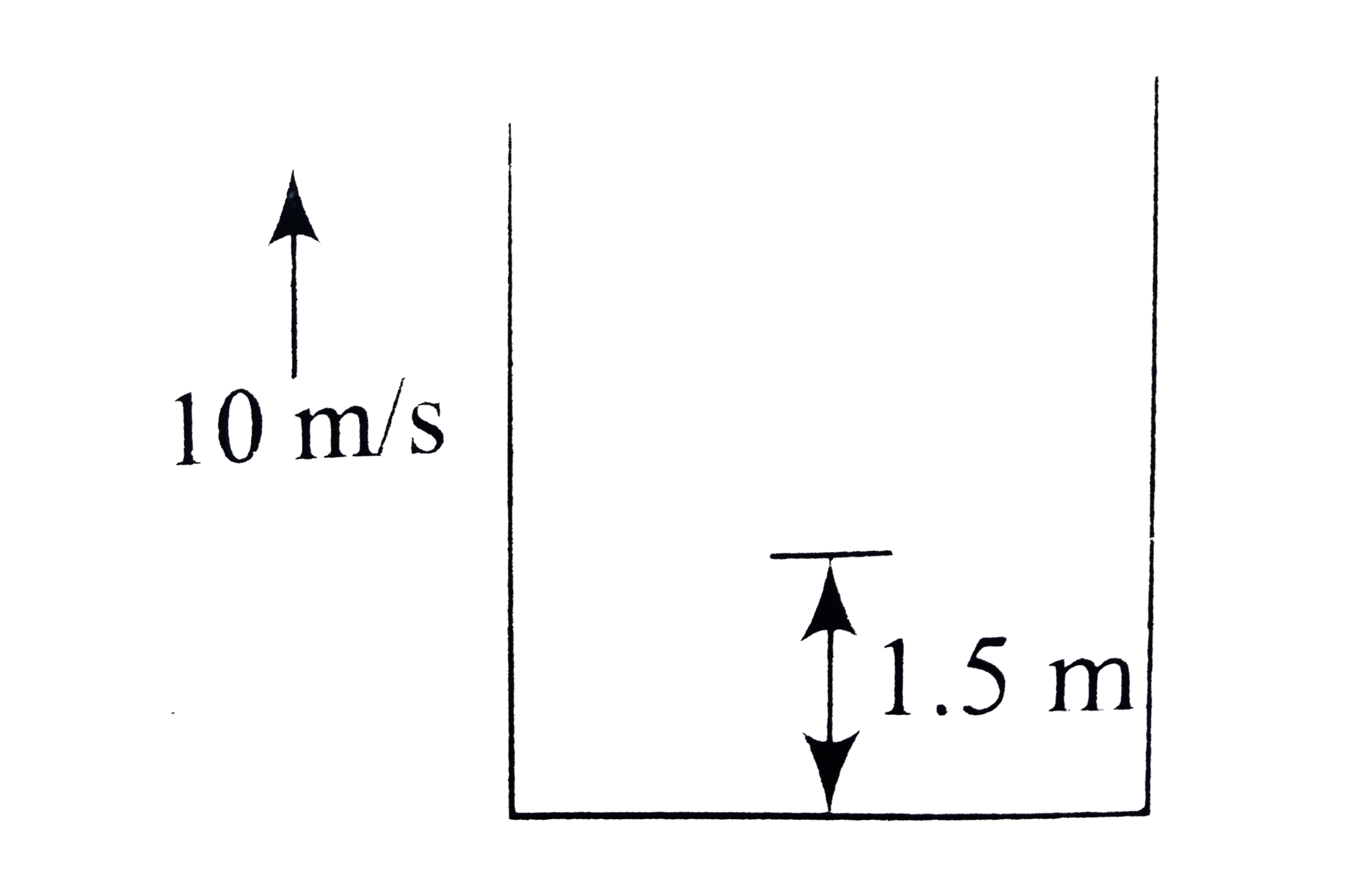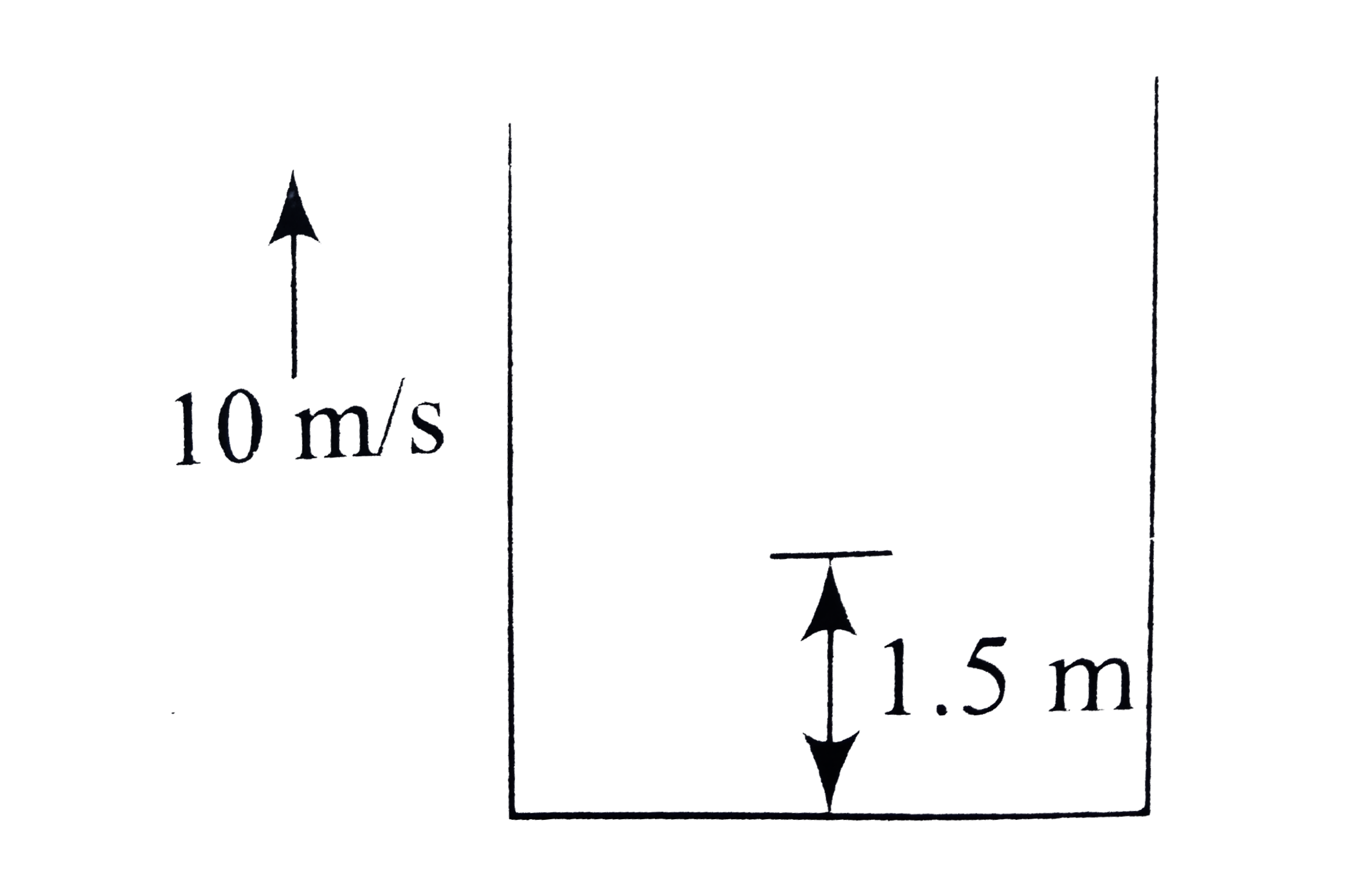An elevator without a ceiling is ascending up with an acceleration of A boy on the elevator shoots a ball in vertical upward direction from a height of 2 m above the floor of elevator. At this instant the elevator is moving up with a velocity of and floor of the elevator is at a height of 50 m from the ground. The initial speed of the ball is with respect to the elevator. Consider the duration for which the ball strikes the floor of elevator in answering following questions. ()
2. The maximum height reached by ball, as measured from the ground would be
73.65 m
116.25 m
82.56m
63.25 m
The correct Answer is:C
To find the maximum height reached by the ball as measured from the ground, we will follow these steps:
Step 1: Determine the initial velocity of the ball with respect to the ground
The ball is shot from the elevator, which is moving upwards. The initial speed of the ball with respect to the elevator is given as 15m/s. The elevator itself is moving upwards with a velocity of 10m/s. Therefore, the initial velocity of the ball with respect to the ground can be calculated as follows:
u=vball+velevator=15m/s+10m/s=25m/s
Step 2: Calculate the time taken to reach maximum height
The time taken to reach maximum height can be calculated using the formula:
tmax=ug
Where g=10m/s2 (acceleration due to gravity). Substituting the values:
tmax=25m/s10m/s2=2.5s
Step 3: Determine the time until the ball hits the floor of the elevator
From the previous calculations, we know that the ball will collide with the floor of the elevator after 2.13s. Since 2.13s<2.5s, the ball will not reach its maximum height before it hits the floor of the elevator.
Step 4: Calculate the maximum height reached by the ball before hitting the floor
To find the height attained by the ball when it hits the floor of the elevator, we can use the following kinematic equation:
H=H0+ut−12gt2
Where:
- H0 is the initial height of the ball above the ground (50 m from the ground + 2 m above the floor of the elevator = 52 m).
- u=25m/s (initial velocity of the ball).
- t=2.13s (time until it hits the floor).
- g=10m/s2.
Substituting the values:
H=52m+(25m/s×2.13s)−12×10m/s2×(2.13s)2
Calculating each term:
1. 25m/s×2.13s=53.25m
2. 12×10m/s2×(2.13s)2=5×4.5369=22.6845m
Now substituting these back into the height equation:
H=52m+53.25m−22.6845m
Calculating:
H=52+53.25−22.6845=82.5655m
Final Answer
The maximum height reached by the ball, as measured from the ground, is approximately 82.57m.
---
The ball is shot from the elevator, which is moving upwards. The initial speed of the ball with respect to the elevator is given as 15m/s. The elevator itself is moving upwards with a velocity of 10m/s. Therefore, the initial velocity of the ball with respect to the ground can be calculated as follows:
The time taken to reach maximum height can be calculated using the formula:
From the previous calculations, we know that the ball will collide with the floor of the elevator after 2.13s. Since 2.13s<2.5s, the ball will not reach its maximum height before it hits the floor of the elevator.
To find the height attained by the ball when it hits the floor of the elevator, we can use the following kinematic equation:
- H0 is the initial height of the ball above the ground (50 m from the ground + 2 m above the floor of the elevator = 52 m).
- u=25m/s (initial velocity of the ball).
- t=2.13s (time until it hits the floor).
- g=10m/s2.
2. 12×10m/s2×(2.13s)2=5×4.5369=22.6845m
The maximum height reached by the ball, as measured from the ground, is approximately 82.57m.
Topper's Solved these Questions
- KINEMATICSBOOK - DC PANDEY ENGLISHCHAPTER - KINEMATICSEXERCISE - Subjective Questions
24 Videos
- KINEMATICSBOOK - DC PANDEY ENGLISHCHAPTER - KINEMATICSEXERCISE - SCQ_TYPE
39 Videos
- KINEMATICSBOOK - DC PANDEY ENGLISHCHAPTER - KINEMATICSEXERCISE - More Than One Correct
6 Videos
- GRAVITATIONBOOK - DC PANDEY ENGLISHCHAPTER - GRAVITATIONEXERCISE - (C) Chapter Exercises
45 Videos
- KINEMATICS 1BOOK - DC PANDEY ENGLISHCHAPTER - KINEMATICS 1EXERCISE - INTEGER_TYPE
15 Videos
Similar Questions
An elevator without a ceiling is ascending up with an acceleration of 5ms−2. A boy on the elevator shoots a ball in vertical upward direction from a height of 2 m above the floor of elevator. At this instant the elevator is moving up with a velocity of 10ms−1 and floor of the elevator is at a height of 50 m from the ground. The initial speed of the ball is 15ms−1 with respect to the elevator. Consider the duration for which the ball strikes the floor of elevator in answering following questions. (g=10ms−2)
1. The time in which the ball strikes the floor of elevator is given by
View SolutionAn elevator without a ceiling is ascending up with an acceleration of 5ms−2. A boy on the elevator shoots a ball in vertical upward direction from a height of 2 m above the floor of elevator. At this instant the elevator is moving up with a velocity of 10ms−1 and floor of the elevator is at a height of 50 m from the ground. The initial speed of the ball is 15ms−1 with respect to the elevator. Consider the duration for which the ball strikes the floor of elevator in answering following questions. (g=10ms−2)
4. The maximum separation between the floor of elevator and the ball during its flight would be
View SolutionAn elevator without a ceiling is ascending up with an acceleration of 5ms−2. A boy on the elevator shoots a ball in vertical upward direction from a height of 2 m above the floor of elevator. At this instant the elevator is moving up with a velocity of 10ms−1 and floor of the elevator is at a height of 50 m from the ground. The initial speed of the ball is 15ms−1 with respect to the elevator. Consider the duration for which the ball strikes the floor of elevator in answering following questions. (g=10ms−2)
3. Displacement of ball with respect to ground during its night would be
View Solution
A boy in the elevator shoots a bullet in a vertical upward direction from a height of 1.5 m above the floor of the elevator. There is no roof in the elevator. The floor of the elevator is at 50 m from ground at the instant when velocity of the elevator is 10 m/s in upward direction. The bullet strikes the floor of the elevator in 2 seconds. The initial speed of the bullet is 15 m/s relative to the elevator.
Q. Find the maximum height reached by the bullet relative to the ground :
View SolutionAn elevator without a ceiling is ascending with a constant speed of 10 m//s. A boy on the elevator shoots a ball directly upward, from a height of 2.0 m above the elevator floor. At this time the elevator floor is 28 m above the ground. The initial speed of the ball with respect to the elevator is 20 m//s. (Take g=9.8m/s2)
(a) What maximum height above the ground does the ball reach?
(b) How long does the ball take to return to the elevator floor?
View Solution
A boy in the elevator shoots a bullet in a vertical upward direction from a height of 1.5 m above the floor of the elevator. There is no roof in the elevator. The floor of the elevator is at 50 m from ground at the instant when velocity of the elevator is 10 m/s in upward direction. The bullet strikes the floor of the elevator in 2 seconds. The initial speed of the bullet is 15 m/s relative to the elevator.
Q. Find the acceleration of the elevator in upward direction, (mss2):
View Solution
A boy in the elevator shoots a bullet in a vertical upward direction from a height of 1.5 m above the floor of the elevator. There is no roof in the elevator. The floor of the elevator is at 50 m from ground at the instant when velocity of the elevator is 10 m/s in upward direction. The bullet strikes the floor of the elevator in 2 seconds. The initial speed of the bullet is 15 m/s relative to the elevator.
Q. Find the displacement of the bullet relative to ground during its flight:
View SolutionAn elevator whose floor-to-ceiling destance is 2.50m starts ascending with a constant acceleration of 1.25ms−2 On second after the start, a bolt begins falling from the elevator. Calculate the free fall time of the bolt
View SolutionStarting from rest, A lift moves up with an acceleration of 2ms−2. In this lift , a ball is dropped from a height of 1.5m (with respect to floor of lift). The time taken by the ball to reach the floor of the lift is (g=10ms−2)
View SolutionAn elevator is moving vertically up with a acceleration a the force exerted on the floor by a passenger of mass m is
View Solution
